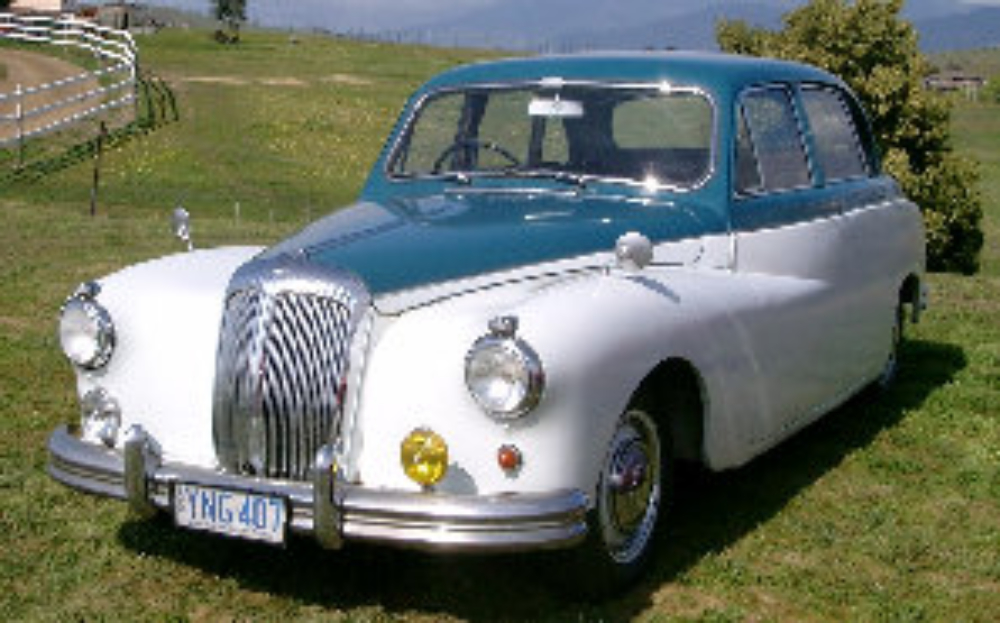The larger Daimler owner-driver saloons just kept on getting bigger.
The One-O-Four developed into the 3.8-litre Majestic, with automatic transmission as standard, far greater performance and (a first for British production cars) four-wheel disc brakes to haul it to a standstill quickly and safely. The car quickly won acceptance as a luxurious businessman’s express.
Then, in 1959, the Edward Turner-designed 4.5-litre V8 (developed from the SP-250 sports car’s 2.5-litre unit) was dropped into a redesigned Majestic body, and the magnificent Majestic Major was born. This car, despite its traditional looks, shattered all preconceived ideas about Daimlers. Despite a huge weight disadvantage (nearly 2 tons fully laden) It could cover a quarter-mile in 17 seconds, top 100mph (180kmh) in under 29 seconds, and could easily top 120mph flat-out — and the larger limousine version wasn’t much slower! Contemporary reports noted that the Majestic Major could easily out-handle and outrun many sports cars of the day, and do it with consummate serenity and style.
For those who doubt the potency of this car, an anecdote from the period should dispel any uncertainty. When Jaguar took over the Daimler company in 1960, one of the first things they did was look closely at the two V8 engines on its production lines. The smaller engine was an obvious choice for the Mk2 Jag’s body, but would the big 4.5-litre Major engine do well in the vast, upmarket MkX hull? Engineers dropped a motor into a MkX to see if it could handle the task — and it promptly blew the doors off everything in the factory. The white-faced Jaguar execs quietly dropped the idea; the notion of marketing a Daimler that could humiliate a Jaguar simply wasn’t on!
TP


